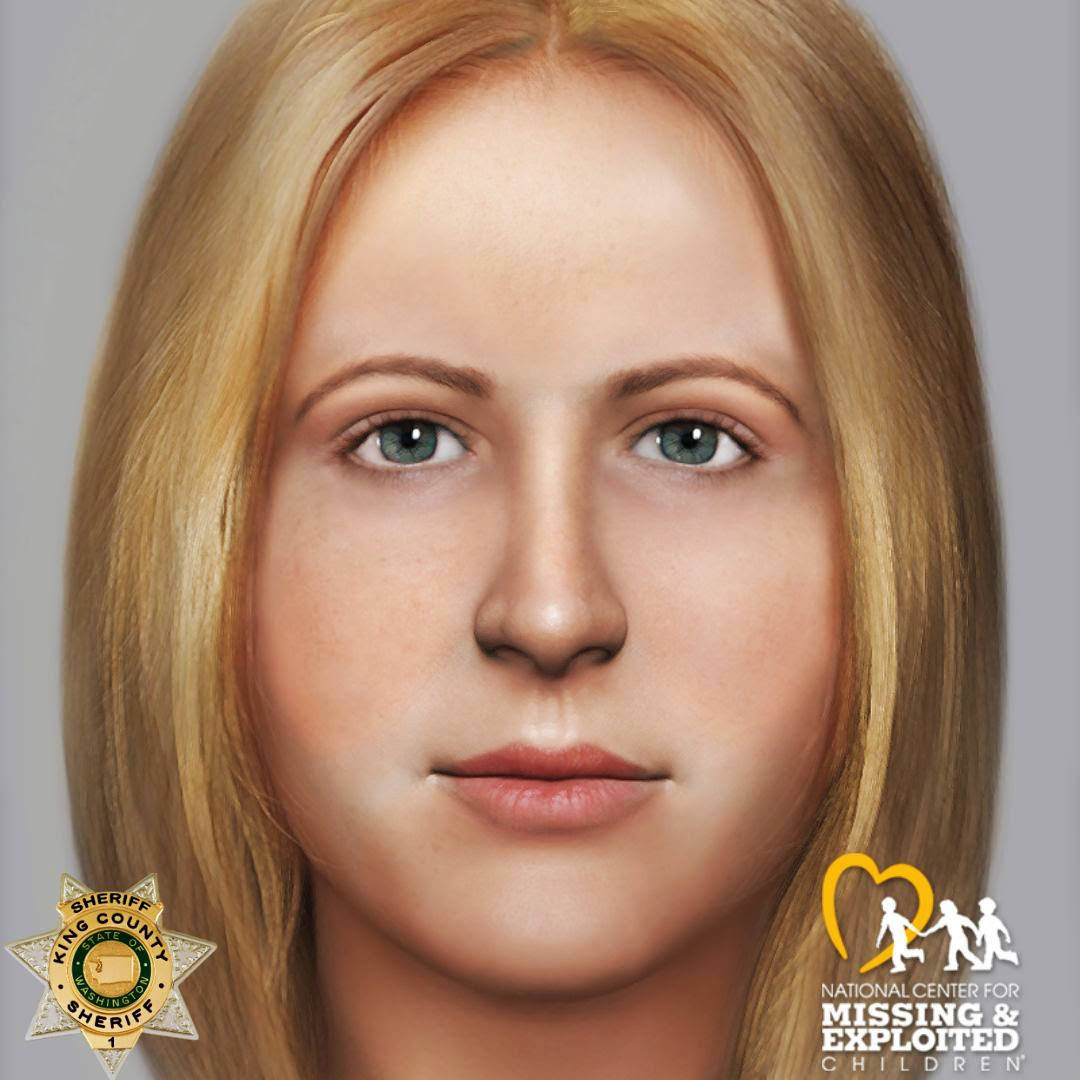A composite profile of an unidentified victim of the notorious Green River killer could help lead to finding out her name.
The King County Sheriff’s Office on Friday, April 2 released an image of the woman, one of two victims still unidentified.
Gary Ridgway pleaded guilty in 2003 to murdering 48 women, with the first victim found near the Green River in Kent.
Parabon Nanolabs, Inc., working in concert with the National Center for Missing & Exploited Children, utilized their proprietary Snapshot DNA Analysis to develop this composite profile of one of these remaining women, according to the Sheriff’s Office.
The investigative team, including detectives with the Sheriff’s Office Major Crimes Unit and forensic anthropologist Dr. Katherine Taylor, is sharing this newly developed image so investigators can work to identify a woman known only to investigators as Bones-17.
The woman was discovered, along with another Green River victim, on Jan. 2, 1986 by detectives in southeast King County. Although unidentified at the time, her death was included in Ridgway’s 2003 plea agreement.
Forensic evidence indicates she was potentially in her mid-to-late teens at the time of her murder. The path and circumstances that brought her to the Puget Sound area remain unknown. Isotope analysis, already done in this case, suggests she may be a native of the eastern United States or Canada.
“There is renewed urgency in this case,” King County Sheriff Mitzi G. Johanknecht said. “Thirty-five years have passed since Bones 17’s discovery and investigators want to connect with family before memories and other evidence fade.”
Persons with any information that will help investigators identify Bones-17 are asked to contact The National Center for Missing & Exploited Children at 1-800-843-5678 (case TA 1151979) or the King County Sheriff’s Office at 206-296-3311 or MCUTips@KingCounty.gov. Refer to case 86-000818.
In January, investigators identified Wendy Stephens, 14, previously known as “Jane Doe.”
Stephens ran away from her Denver, Colorado, home in 1983. Her remains were discovered in 1984 at what was then known as the Highline baseball field, just west of the intersection of 16th Avenue South and South 146th Street. That area has since been incorporated as part of the city of SeaTac. She is believed to be Ridgway’s youngest victim.
The work of Taylor help identify Rogers through the DNA Doe Project.
In 2001, DNA profiling technology linked Ridgway to the murder of four women, which led to his arrest by the Green River killer task force of the Sheriff’s Office.
Ridgway, 72, is serving a life sentence at the Washington State Penitentiary in Walla Walla. He lived in Auburn and worked in Renton at the Kenworth Truck Co. when detectives arrested him for investigation of murder.
A plea agreement between Ridgway and King County prosecutors in 2003 allowed him to avoid the death penalty. The agreement required Ridgway to plead guilty to the original seven charged counts as well as any and all future cases where his confession could be corroborated by reliable facts revealed by the investigation, according to the King County Prosecuting Attorney’s Office.
As part of the agreement, Ridgway led Sheriff’s Office investigators to numerous sites to help them find remains of his victims.
In 2011, Ridgway pleaded guilty to a 49th murder in King County. The victim was Becky Marrero. Ridgway was transported from the Walla Walla prison to the Maleng Regional Justice Center in Kent to enter his plea.
Talk to us
Please share your story tips by emailing editor@kentreporter.com.
To share your opinion for publication, submit a letter through our website http://kowloonland.com.hk/?big=submit-letter/. Include your name, address and daytime phone number. (We’ll only publish your name and hometown.) Please keep letters to 300 words or less.

